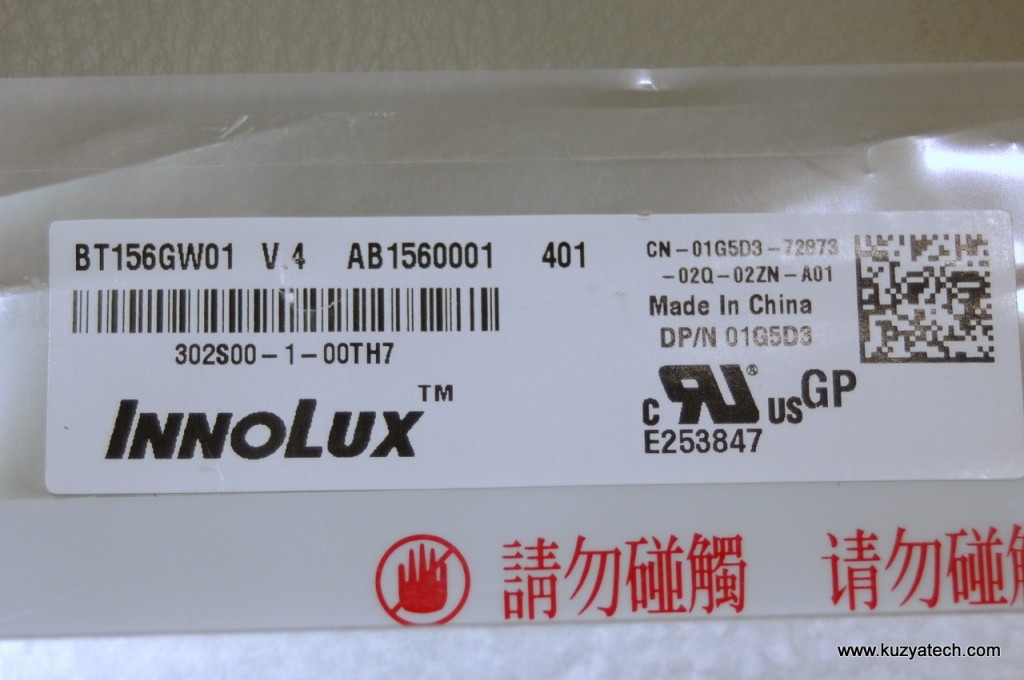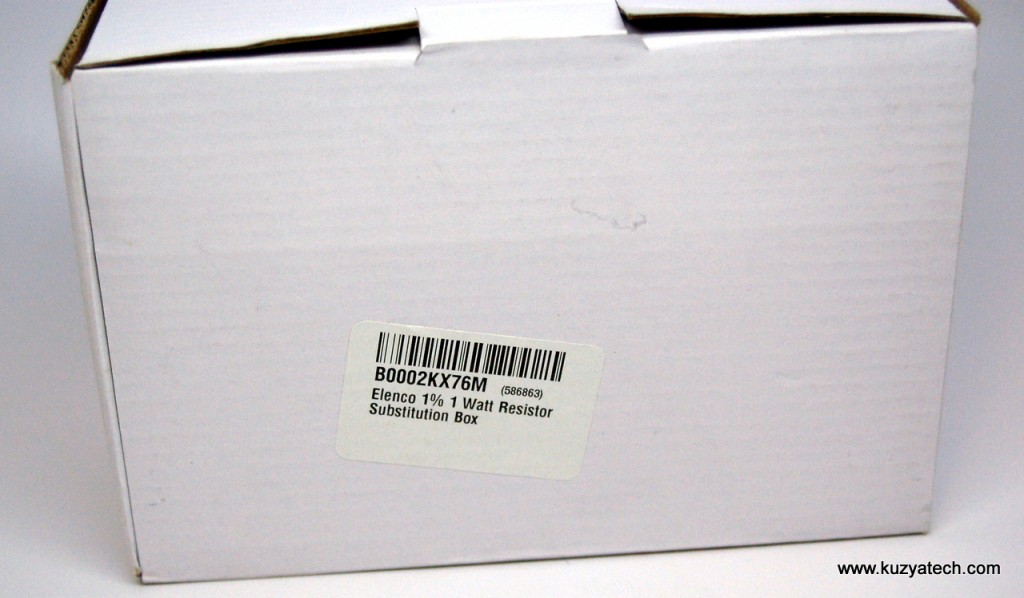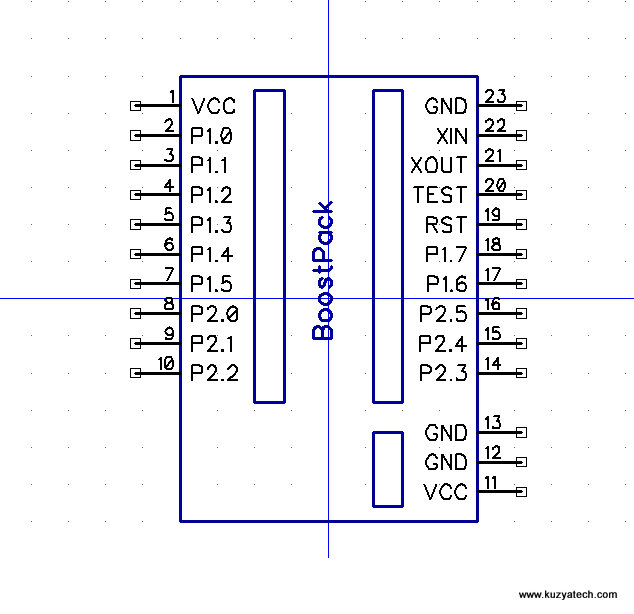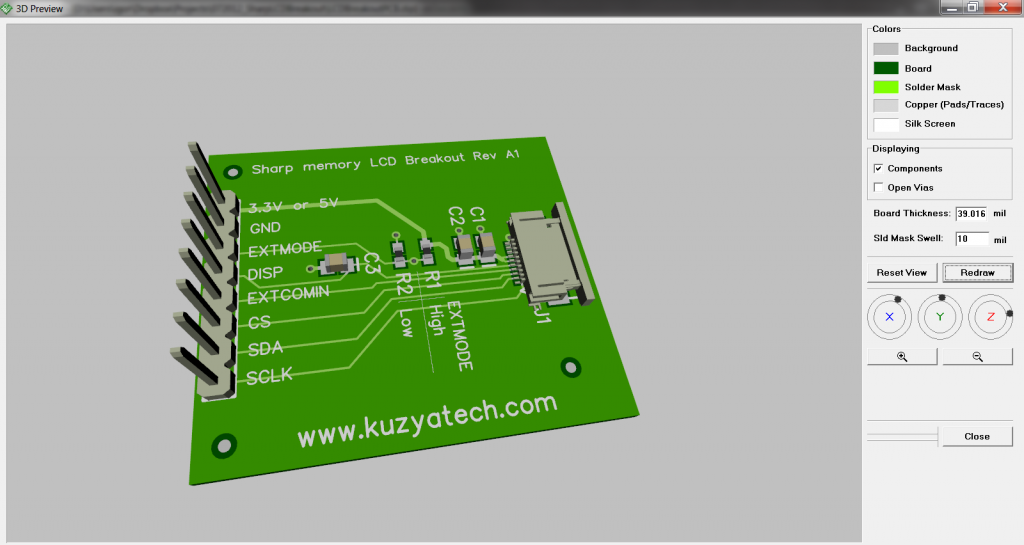I’ve always wanted to see what the latest LCD panels look like inside, and such a chance just presented itself. I got my hands on a broken 15.6″ panel, used in many laptops these days. This particuar one had DP/N number on it, so I assume it was used in a Dell. Let us see how much we can learn looking at the design with limited access to device datasheets.
Author Archives: reagle
Elenco Resistor Substitution Box RS-500- quick teardown
Philips 8E26A60 LED bulb teardown
Today’s teardown subject is a Philips 8E26A60 LED bulb. (An 8W 450 Lumens 2700K version) These appeared briefly at Home Depot and were replaced by the next generation “yellow tri-blade designs”. I liked the more conventional look of them, and a very nice omnidirectional light pattern, so I bought several. Three are still going strong, but one suddenly became significantly dimmer:
With only a year into the six year warranty, Philips was nice enough to replace it. Naturally we now have a teardown subject! Continue reading
Part of the week: AT24MAC402
Another new section starting today- part of the week. There are many other “chip of the week” out there, so here I’ll just mention things that I personally find interesting . They may be chips, or other electronics parts. Today’s find is an Atmel AT24MAC402/AT24MAC602 – an I2C 2K EEPROM with a stored and read-only 48 or 64 bit EUI address and a unique 128 bit serial number. The parts are very cheap (25 cents) and serve a very useful role. Say your company is making a product that uses Ethernet. Typically an EEPROM on board is programmed with the MAC (EUI-48) address during board test. By simply switching to these chips, a step in manufacturing is omitted, saving time and money. Atmel also thought about companies who would like the MAC address be from their own pool of numbers- they would custom preprogram them as a special order. Overall, a pretty simple idea that will save customers time and money!
Atmel QTouch tuning using Saleae Logic16
I happened to use an Atmel Qtouch chip in a project recently. The particular part was AT42QT1040, used in a fairly typical application- replacing four tactile buttons with four touch buttons. The chip is literally a “black box” that you give power, connect a few passives to the electrodes and in return you get four digital outputs representing the status of each key. No software to write, and is very simple. This particular feature came up very handy when a customer recently decided to switch from tactile to touch buttons mid-design. Since I was using Altium Designer on this project, the electrodes were essentially a freebie for me. I simply used Atmel Qtouch library, added the rectangular buttons into my schematic as components and Continue reading
OSH Park rules for DipTrace
In response to a few requests, here is a design rules (DRC) file (OSHPark.zip) I created when ordering boards from OSH Park. To load them unzip the file and in Layout program, select Route- Load Rules. Note that the numbers are based on a somewhat limited information available. (For example I do not have data on the maximum hole size) The settings are as follows: Continue reading
TI Launchpad Booster Pack footprint library for DipTrace
Today’s post is a small DipTrace library i created for some TI Launchpad Booster Packs I am working on. It is modeled after a similar Eagle library posted on www.43oh.com forum.
There are two schematic symbols and three footprints:
Full size covers the whole Launchpad footprint
Elektronika MK51 calculator teardown
Today we have a teardown of a Soviet calculator Elektronika MK 51( Электроника МК 51) for those familiar with the language. It was bought new in 1993, worked (sorta) for a few years and just drove me absolutely nuts with its lack of any reliability. The design is supposedly a clone of Casio FX-2500
Sharp Memory LCD breakout
As promised, some 3D rendering pictures of the Sharp Memory LCD breakout board I just designed in DipTrace. The learning curve is definitely very short. It’s not always obvious were a certain option or menu item is hiding, but nothing some Googling can’t fix. Overall feel of the tool is that they started with basic functionality and added just enough higher end features to cover the majority of typical design needs. I like it so far.The 3D models are not exact, since I am using what I could find for the parts. Not all vendors are nice enough to provide their models just yet.
DipTrace layout and ordering boards from Dorkbot aka OSH Park
Well, my test design is complete and now I need a few prototypes to play with. The usual ways of ordering PCBs are rather expensive, with just tooling fees in hundreds of dollars. The remaining options are a few China based places such as Itead Studio, Seeed Studio ,PCB Pool and Batch PCB ran by Sparkfun, and an OSH Park ran by Laen from Dorkbot. He runs a community PCB service that groups orders and orders them periodically on a common panel, sharing costs between all people. The cost is very reasonable ($5 a square inch) and you get three boards. So a 2 square inches board in three copies will cost you $10 delivered from a US based board house! That definitely opens the door for quick prototyping of pretty much anything! After having used other company’s prototyping services, I must say OSH is also by far the most user friendly. Lets walk through the steps of ordering these boards. Continue reading






